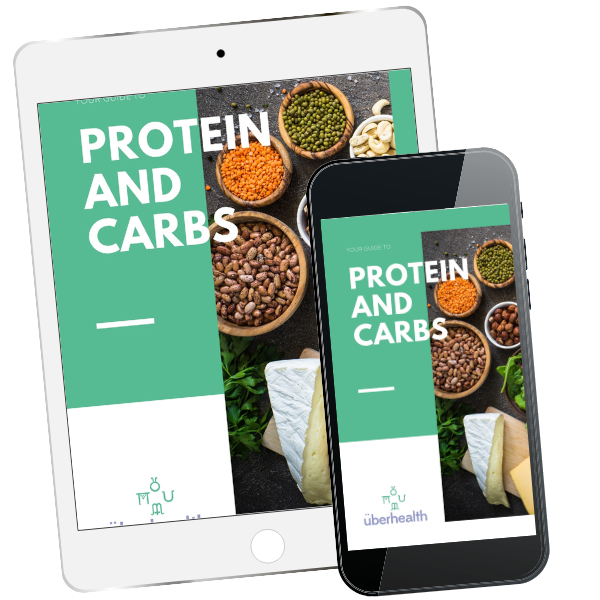Fueling Women’s Metabolism: Understanding Fat Adaptation, Meal Timing, and Body Types

Metabolic health is a cornerstone of overall well-being, yet many women struggle with energy fluctuations, weight challenges, and insulin resistance without understanding why. As health practitioners, it’s crucial to move beyond generic dietary advice and focus on metabolic flexibility, fuel partitioning, and personalised nutrition strategies tailored to body types and chronotypes.
In this article, we’ll explore how fat adaptation differs from keto adaptation, the role of meal timing, and how body types and activity levels influence metabolism. By integrating these insights, practitioners can help women optimise their energy, manage weight more effectively, and build metabolic resilience.
What Is Metabolic Flexibility and Why Does It Matter?
Metabolic flexibility refers to the body’s ability to efficiently switch between different fuel sources—glucose and fat—depending on energy demands. A healthy metabolism seamlessly transitions between using carbohydrates for quick energy and burning stored fat when glucose is unavailable.
However, modern dietary habits, chronic stress, and insulin resistance can impair metabolic flexibility, leading to:
❌ Blood sugar crashes and energy fluctuations
❌ Increased hunger and food cravings
❌ Difficulty losing weight despite “eating healthy”
❌ Reduced exercise performance and recovery
Helping women restore metabolic flexibility means improving fuel efficiency—so their bodies can burn fat effectively when needed while still handling carbohydrates appropriately.
Fat Adaptation vs. Keto Adaptation: Understanding the Difference
One of the most misunderstood concepts in metabolic health is fat adaptation versus keto adaptation. While both involve the body using fat as fuel, they are not the same:
|
Fat Adaptation |
Keto Adaptation |
|
The body becomes efficient at burning fat as an energy source but can still use glucose when available. |
The body relies primarily on ketones for energy due to prolonged carbohydrate restriction. |
|
Occurs naturally with metabolic flexibility and a balanced diet. |
Requires a strict low-carb, high-fat ketogenic diet (typically <50g carbs/day). |
|
Allows the body to use both carbs and fat effectively. |
Reduces the body's ability to switch back to carb metabolism easily. |
|
Supports sustained energy, endurance, and stable blood sugar. |
Can lead to initial energy dips, electrolyte imbalances, and adaptation symptoms. |
🔖 Takeaway for practitioners: Encouraging fat adaptation rather than keto adaptation offers a more sustainable way for women to improve metabolic health without extreme dietary restrictions.

Fuel Partitioning: How the Body Chooses Energy Sources
Fuel partitioning refers to how the body decides whether to burn carbohydrates or fats for energy. The crossover point—the intensity at which the body switches from fat-burning to glucose-burning—varies based on metabolic health, fitness levels, and diet.
In metabolically flexible individuals, the body naturally adjusts based on activity demands:
- Low-intensity activities (walking, yoga, daily movement) → Fat-burning mode
- Moderate-intensity exercise (jogging, cycling, strength training) → Mix of fat and glucose
- High-intensity exercise (sprinting, HIIT, competitive sports) → Primarily glucose-based
🚀 Key insight:
Women who struggle with energy dips or performance plateaus may not be efficiently tapping into fat stores, leading to excessive reliance on carbohydrates.
Supporting fat adaptation through meal timing, movement, and balanced macronutrients allows for better fuel utilisation and more stable energy levels.
Meal Timing & Circadian Rhythms: Why When You Eat Matters
The timing of meals plays a crucial role in hormonal regulation, energy production, and metabolic efficiency.
Key Factors in Meal Timing for Metabolic Health:
✔️ Aligning meals with circadian rhythms – Eating in sync with the body’s natural rhythms improves digestion, insulin sensitivity, and energy balance.
✔️ Front-loading calories – Consuming larger meals earlier in the day supports blood sugar control and metabolic function.
✔️ Strategic fasting windows – Short, controlled fasting periods (e.g., 12-14 hours overnight) may enhance fat-burning and cellular repair in metabolically healthy women.
Meal Timing Strategies Based on Body Type & Activity Level:
|
Body Type & Activity Level |
Best Meal Timing Approach |
|
Sedentary or low activity levels |
Balanced meals every 4-5 hours, light dinner, avoid late-night snacking. |
|
Active & strength training individuals |
Protein and carbs post-workout, steady meal timing, avoid long fasting periods. |
|
Women with insulin resistance/PCOS |
Early time-restricted eating (e.g., 8 am–6 pm) to improve insulin sensitivity. |
|
High-stress or adrenal fatigue cases |
Regular meals to stabilise cortisol and prevent blood sugar crashes. |
🔍 Key insight:
Practitioners should tailor meal timing advice to individual metabolic needs, rather than applying one-size-fits-all fasting or eating patterns.
Body Types & Metabolic Health: Personalising Nutrition & Activity
Each woman’s metabolism responds differently based on body composition, genetics, and hormonal balance. Understanding how body types impact energy utilisation and training preferences allows for more effective nutrition and movement plans.
|
Body Type |
Metabolic Considerations |
Best Nutrition & Training Strategies |
|
Ectomorph (Lean, struggles to gain weight) |
Higher metabolic rate, better insulin sensitivity. |
Higher carb tolerance, focus on strength training & muscle-building. |
|
Mesomorph (Naturally athletic, balanced weight gain/loss) |
Moderate insulin sensitivity, adaptable metabolism. |
Balanced macronutrients, mix of strength and endurance training. |
|
Endomorph (Easily gains weight, slower metabolism) |
Higher risk of insulin resistance, tends to store fat. |
Lower carb tolerance, focus on resistance training & metabolic conditioning. |
💡 Key insight: Practitioners should adjust dietary and movement recommendations based on body composition and metabolic function, rather than prescribing the same advice for all clients.
Further Education: Optimising Women’s Metabolic Health
For practitioners looking to refine their approach to metabolic health, continuing education is key. The "Optimising Metabolic Health in Women" workshop is designed to deepen understanding of metabolic flexibility, insulin resistance, and strategic interventions.
What you’ll learn:
- The science behind fat adaptation vs. keto adaptation
- How meal timing affects metabolism and hormone health
- Assessing and tracking metabolic health markers in women
- Personalised nutrition for different body types and activity levels
📌 Access the Training: Optimising Metabolic Health in Women
Final Thoughts: A Personalised Approach to Women’s Metabolic Health
Supporting women in optimising their metabolism requires a tailored, science-backed approach. By understanding fat adaptation, meal timing, fuel partitioning, and body-specific strategies, practitioners can help clients achieve stable energy, metabolic flexibility, and long-term health—without extreme dieting.
As practitioners, our role is to educate, personalise, and empower, ensuring that women move away from restrictive diets and into sustainable metabolic health strategies.
FREE RESOURCE


